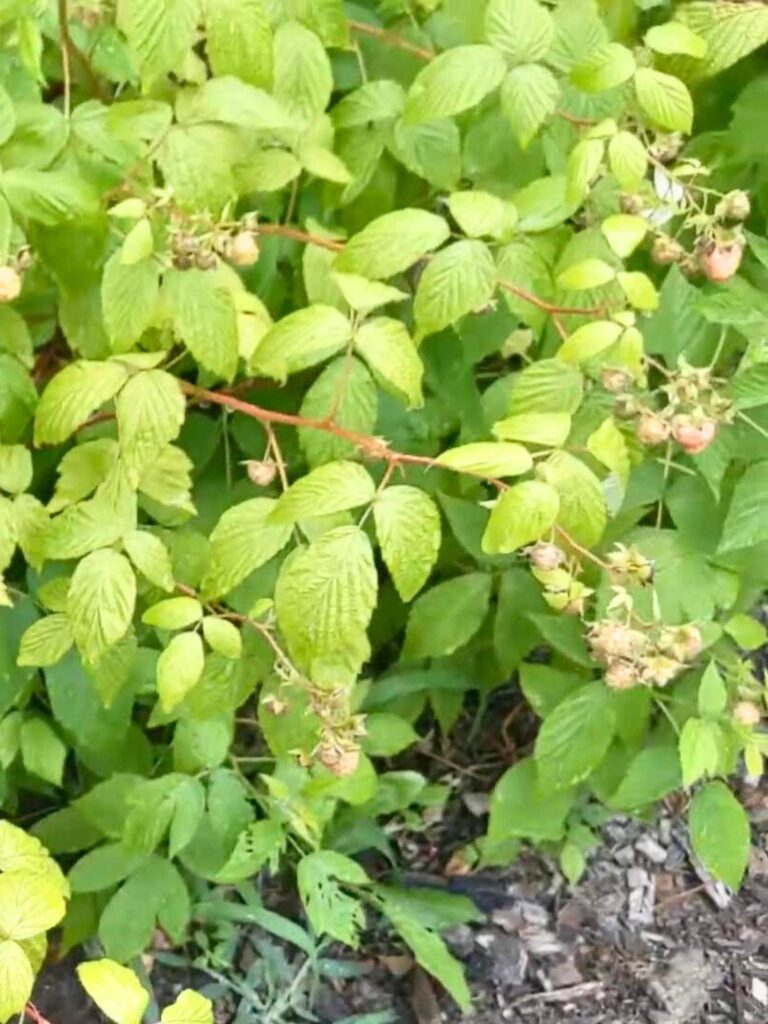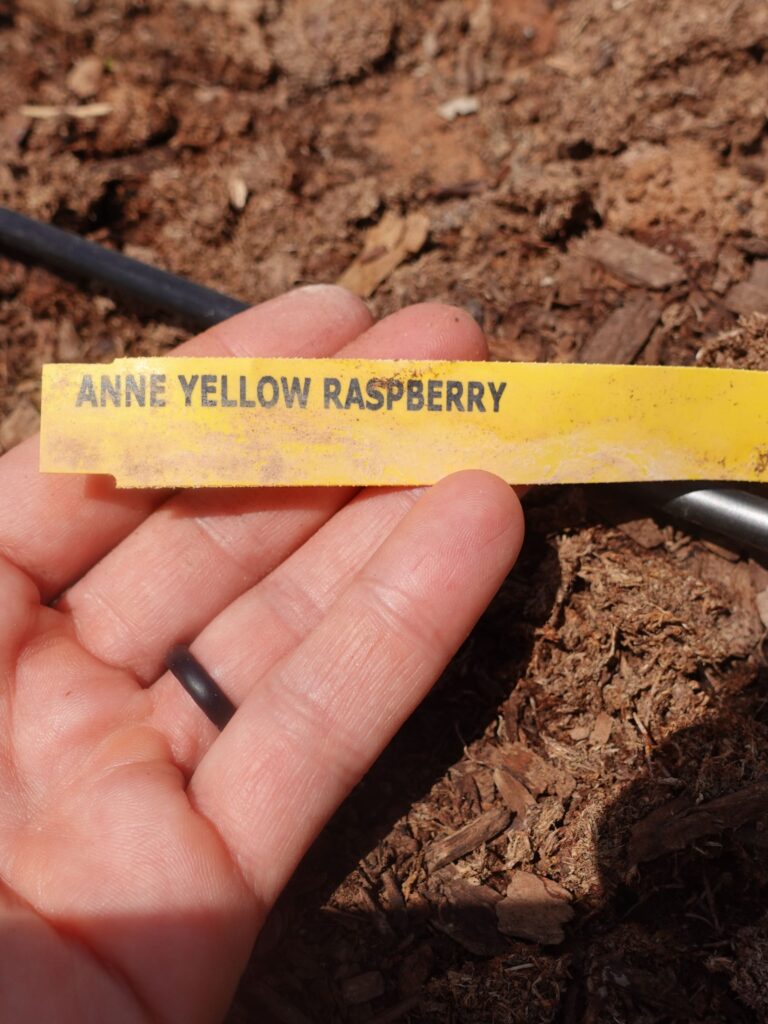How to Grow Raspberries in the Desert: Growing Guide
Want to know how to grow raspberries in the desert? Here is your growing guide!

If you have ever tasted a handful of delicious raspberries strait off the raspberry bush you will find yourself wanting to create a raspberry patch for yourself.
At least that was the case for me. I grew up next to my grandma and she had a long row of raspberry bushes. Every day I could be found crouched down, hidden in the bushes, enjoying my sweet summer harvest.
If you’re like me, and you live in a very dry climate. You might be wondering if raspberries can even grow where you live. I am here to tell you that it is possible!
I live in the high desert, where we get heat and extreme cold, but I have advice for those in the low desert as well. Let’s dive in!
A few things about raspberries

Raspberries are vigorous plants when given the right growing conditions. They send out new sprouts each year that you will need to remove if they grow out of your designated area.
These new growths can be transplanted to a new location or given to a friend. Raspberries need full sun and prefer acidic soil.
If you do not have acidic soil then you will need to lower your soil ph when prepping your garden beds for raspberries. I will discuss that later.
There are many different types of berries that you can grow. There are raspberries plants that produce good fruit in early summer (June bearing), mid summer or summer bearing raspberries, everbearing variety (they produce throughout the summer), and fall bearing raspberries (produce august).
In my raspberry patch I have a variety of berries that will bear fruit at different times over the summer so I can have a good strong harvest the entire summer. This also helps to know what varieties do best in your area.
Raspberries like well draining soil that doesn’t hold water for long periods of time. Raspberries usually start producing fruit on second year canes, so you might not get any fruit the first year of planting.
Can I plant raspberries in the desert?

Yes! There are two types of desert: High desert and low desert. I live in the high desert at almost 7,000ft of elevation. We experience cooler climates with less extreme heat (though we can still get over 100 degrees Fahrenheit occasionally) and pretty harsh winters.
Low deserts usually experience more extreme heat and mild winters. If you live in a low desert, you will have to work a little more (just a little) at getting raspberry plants to thrive. Both places are SO, SO, dry and you will need to follow my tips to combat that desert climate.
How to prep your garden bed to grow raspberries in the desert
Prepping your desert berry patch might look a little different than if you were living in a humid climate. Deserts have alkaline soil and so we need to lower that ph first.
I usually mix compost, peat moss, and a little organic soil acidifier together and add that to the top layer of my garden bed. Make sure the location of your bed isn’t prone to flooding.
Even deserts experience rainy seasons and can flood your raspberries. You can plant your plants in the early spring or fall but NOT summer.
They won’t make it. Prep your garden bed with 3-5 inches of compost mixture several weeks before planting your raspberry plants. You don’t want to burn your raspberry plants.
When purchasing raspberry plants you can buy them in pots at a local nursery, or online as bare root plants. If you buy potted plants you will need to dig a larger hole for your plants.
For bareroot plants you will soak the roots before planting. Plant just at or even a little above the root zone. People often plant their raspberries too deep.
If you have a bare root plant, spread the roots out and make sure you water the entire area that the roots cover.
How to grow raspberries in the desert

There are many different ways that you can improve your berry success. Take these tips and then you can decide what the best way for you to improve your berry patch and grow some good fruit!
1)Avoid raised garden beds and pots
In the desert raised beds and potted plants will dry out much quicker than an in ground garden.
This is especially important for low desert people. Don’t do raised beds, just don’t.
Even a large pot wont do. Pots heat up so much and are like ovens. Those roots will simply bake in a pot.
2)Afternoon shade
My raspberry plants get full sun (8 hours) but when the heat of the afternoon sets in, they are shaded by our home.
Thus afternoon/evening shade. Morning sun is less harsh and still just what the plants need. If you can swing morning sun then afternoon shade, your plants will be less likely to roast.
3)Fertilize in the spring
Because you live in the desert, your soil will naturally try to become alkaline as the year goes on. This is why I will always fertilize my berries with a SOIL ACIDIFIER fertilizer every spring.
This will keep your soil ph down to where you need it. If you are curious about what your ph is, you can order test strips that will tell your soil ph.
4)Consistent watering

Garden plants in general will do much better with consistent watering. The slow release of a soaker hose or drip system is the ultimate watering system for the desert.
Water evaporation is a thing and even more so in the desert. If you spray your plant for 30 seconds with the hose, and call it good, some of that water will evaporate and won’t penetrate deep into the root systems.
Slow drips allow the water seep down and give your raspberries a proper watering. IMPORTANT: When you have newly planted raspberries, they need to be watered EVERY DAY!
Daily watering for 3-4 weeks no mater where you live is very helpful to a newly planted raspberry plant.
They may even need to be watered every day throughout the entire summer. When the days get above 85-90 degrees F, I water every day.
5) Mulch

Using organic matter such as wood chips, straw, cover crops, or grass clippings can be added to the base of the plant and will help keep the moisture in the soil.
In humid places, you shouldn’t mulch your raspberry plants too much because it traps in moisture and can cause fungal diseases.
That usually isn’t a problem in the desert and so I advise that adding mulch to your raspberries in the desert is a great way to help keep your raspberry plant roots moist.
6) Multiplying Plants

After the first year of growing raspberry plants in the desert, you will see new shoots coming out of the ground the following year.
Sometimes these shoots will begin to grow out of your established bed. Remove the shoots early. You can transplant these new shoots back into your garden bed to fill out your bed.
You can also donate these shoots to a neighbor or a friend!
Give growing raspberry plants in the desert a try. Let me know what raspberry varieties are your favorite!
This post contains affiliate links. That means I may earn a small commission at no extra cost to your.

